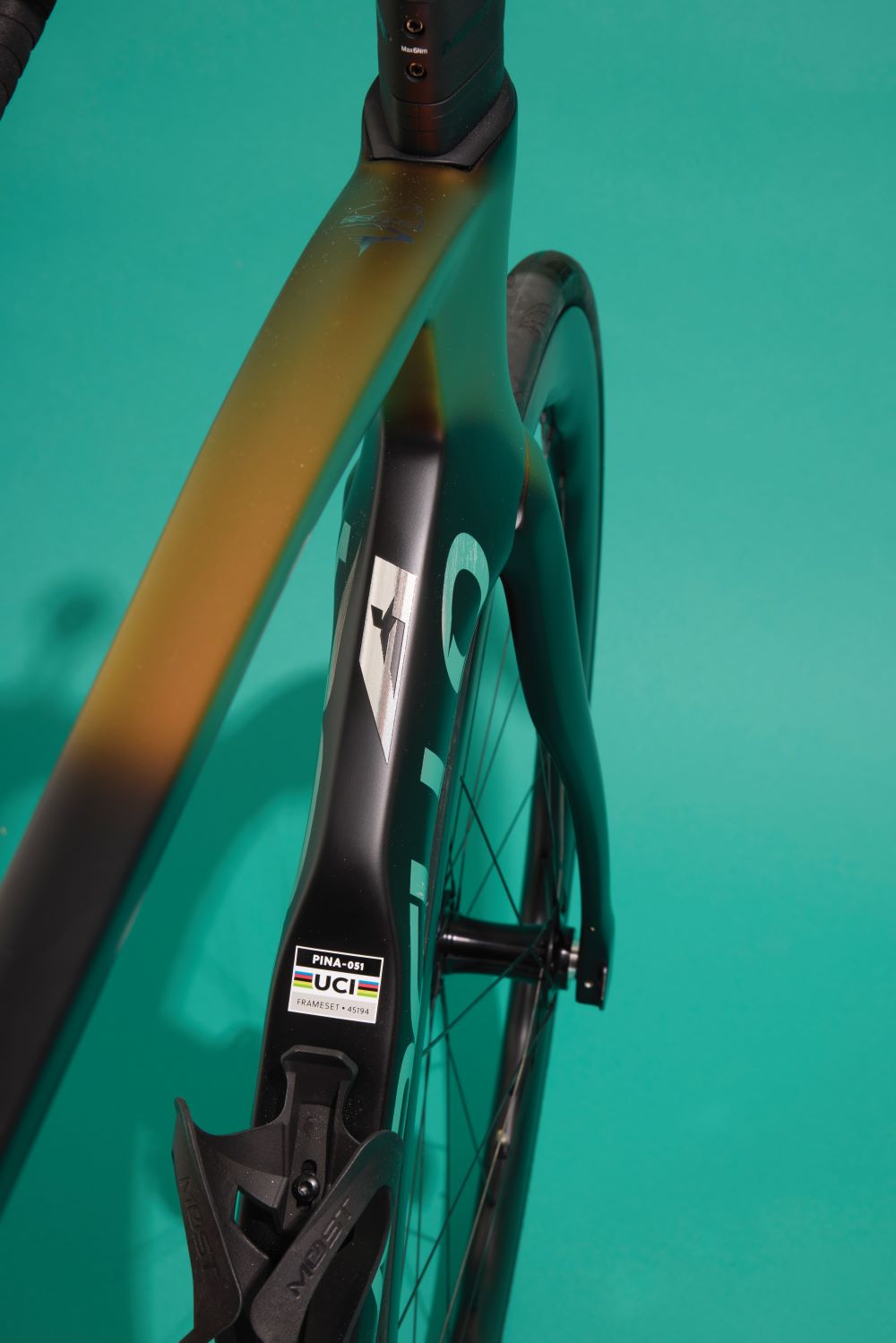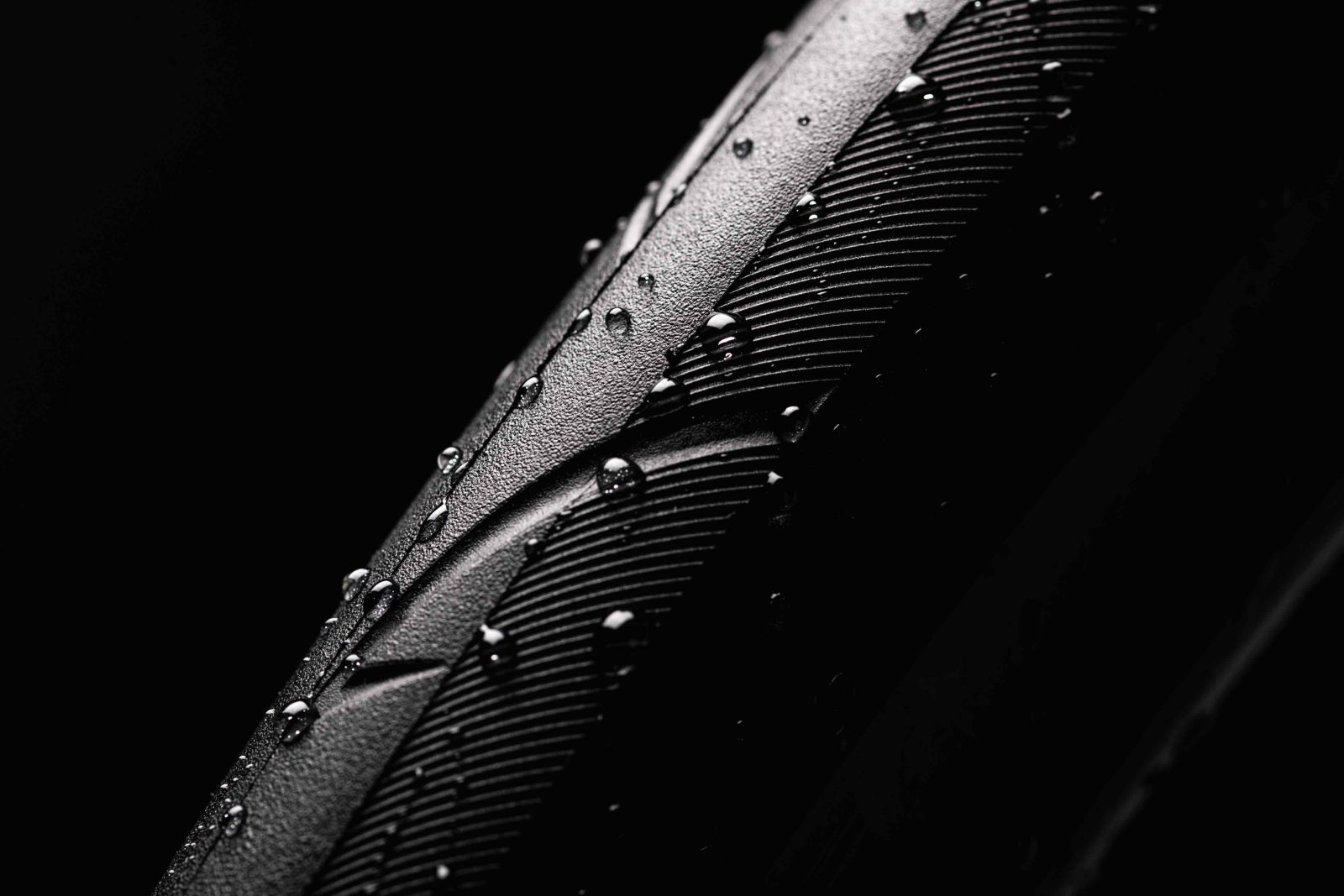The Pinarello Dogma F uses new ingredients to drop weight and get faster

Words Sam Challis Photography Tapestry
The typical lifecycle of a high-end bike these days tends to be around three to four years, but the Pinarello Dogma F has traditionally been revised at a significantly faster rate.
That means there have been plenty of updates in the platform’s 22-year history.
‘We were a formation partner of Ineos Grenadiers – then Team Sky – and the team needs a new bike every two years,’ says Pinarello CEO Fausto Pinarello.
‘Our starting point for new projects is always to ask, “What does the team need?” For example, they’ve always said they don’t want to change bikes mid-race, and we knew we could build a well-rounded race machine, so we shunned the trend for separate race categories.
‘Now other brands are recombining their lightweight and aero bikes, coming back to where we’ve been all along.’
The 2022 Tour de France was another example of Pinarello’s use of pro-derived data mining.
‘We measured Geraint Thomas’s performance data at the race to assess his energy expenditure against the four main contributors to speed: weight, aerodynamics, rolling resistance and comfort,’ says Pinarello.
‘We then weighed that data against where we could make gains in the Dogma’s design.’
Unsurprisingly, given how well-understood its effects are these days, aero efficiency proved the biggest area for improving the bike.

‘We found that over the course of a Grand Tour, just a 0.2% improvement in the bike’s coefficient of drag [CdA] equates to saving 175g in weight,’ says Pinarello.
‘That weight would normally be incredibly hard to find, but a better CdA was achievable.’
That said, Pinarello claims the new Dogma drops 108g versus its predecessor, thanks in part to the inclusion of a different type of carbon fibre, Toray’s Torayca M40X.
This is used in place of the T1100G fibres introduced in the F8 in 2018 and has been used in Pinarello’s Dogma X-Light (lightweight, exclusive versions of previous Dogmas generally only used by pros) for several years, but it has taken considerable development for the brand to exploit its advantages while keeping framesets robust.
Reportedly, X-Light framesets were fragile in certain areas and weren’t really suitable for normal-weight riders.
‘M40X has a far higher tensile modulus than anything we’ve used in our normal bikes before,’ says Pinarello.
In layman’s terms that means it’s stiffer, so less material is required for the same stiffness, thereby dropping weight.
Pinarello says that a fully built size 53cm Dogma F weighs 6.63kg.
Dragging down drag
The Dogma’s distinctive design language is stronger than ever in the latest F.
Fausto Pinarello himself often declares with no little amount of passione that his bikes will always be beautiful machines, but the new F’s tube junctions are visibly different, with more pronounced webbing making areas such as the bottom bracket and head tube junctions much larger.
‘Filippo’s [Ganna, Ineos Grenadiers’ time-trial specialist] Hour record-winning Bolide informed the new Dogma profiles,’ says Pinarello.

‘The down tube has been made steeper by 3.5°, bringing the front edge of the bottom bracket junction forward and the rear of the head tube backward.
The larger bottom bracket also recaptures any stiffness lost by having to make the chainstays slimmer to bump tyre clearance up to 32mm.’ Claims of the keel-like shape of the BB smoothing airflow are echoed to a greater degree at the head tube, but the bike’s main aero benefit comes from slimming the front end down laterally.
The head tube has been narrowed by 8mm courtesy of some reimagined cable routing, which was achieved by making the fork steerer elliptical.
The new steerer cross section – which is oval left-to-right when viewed from above – creates space for the cables directly in front of the steerer rather than to the sides of it.
This means smaller bearings can be used, and the corresponding tubes and components that make up that area of the bike can all be narrower too.
Details matter
The slimmer thinking has been carried through to the skinnier Onda fork (which also has a longer rake to create less trail and quicker handling) and new Talon Ultra Fast cockpit, which is made by Most, Pinarello’s in-house component brand.
It’s 40g lighter than previously, is now slightly flared and comes in widths down to 40cm (measured outside to outside, which is actually 38cm centre to-centre).

Crucially, it angles the hoods inwards such that the rider’s hands can be just 34cm apart.
‘An aero body position is such an important part of going fast, and the new bars help to achieve this in a comfortable and safe manner,’ says Pinarello.
At the same time as helping optimise the bulk of the total system drag, Pinarello hasn’t overlooked even the tiniest supporting details.
The thru-axle threads are now captive and smoothed over on the fork and rear dropout, and the seatpost clamp is smaller, lighter and now fully integrated into the back of the seat tube for a clean look.
As Ineos Grenadiers will know better than most, it’s the details that matter.
And in the latest Dogma F, Pinarello doesn’t seem to have left any stone unturned.
Pinarello Dogma F
AU Pricing $23,999
Website pinarello.com



